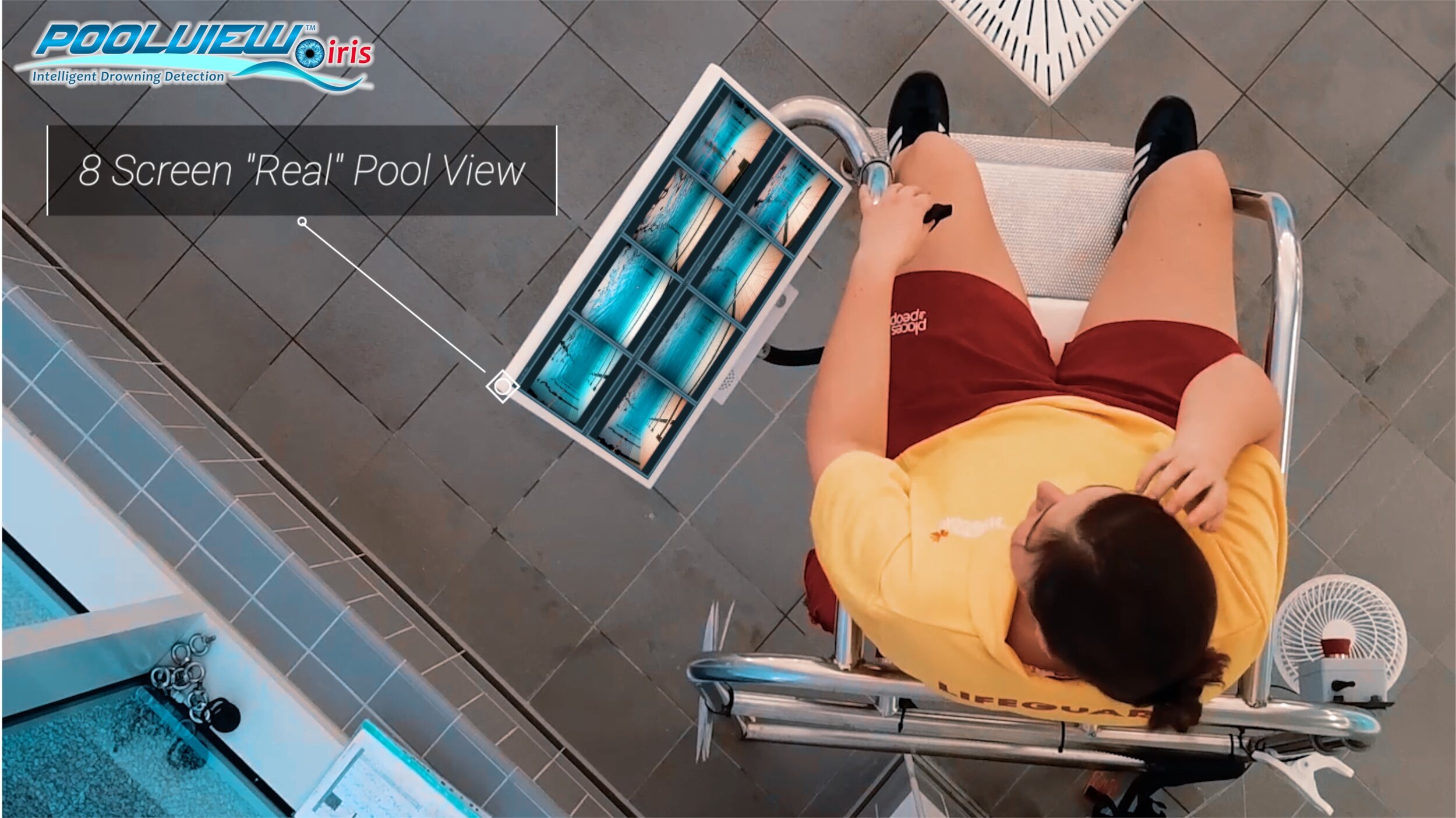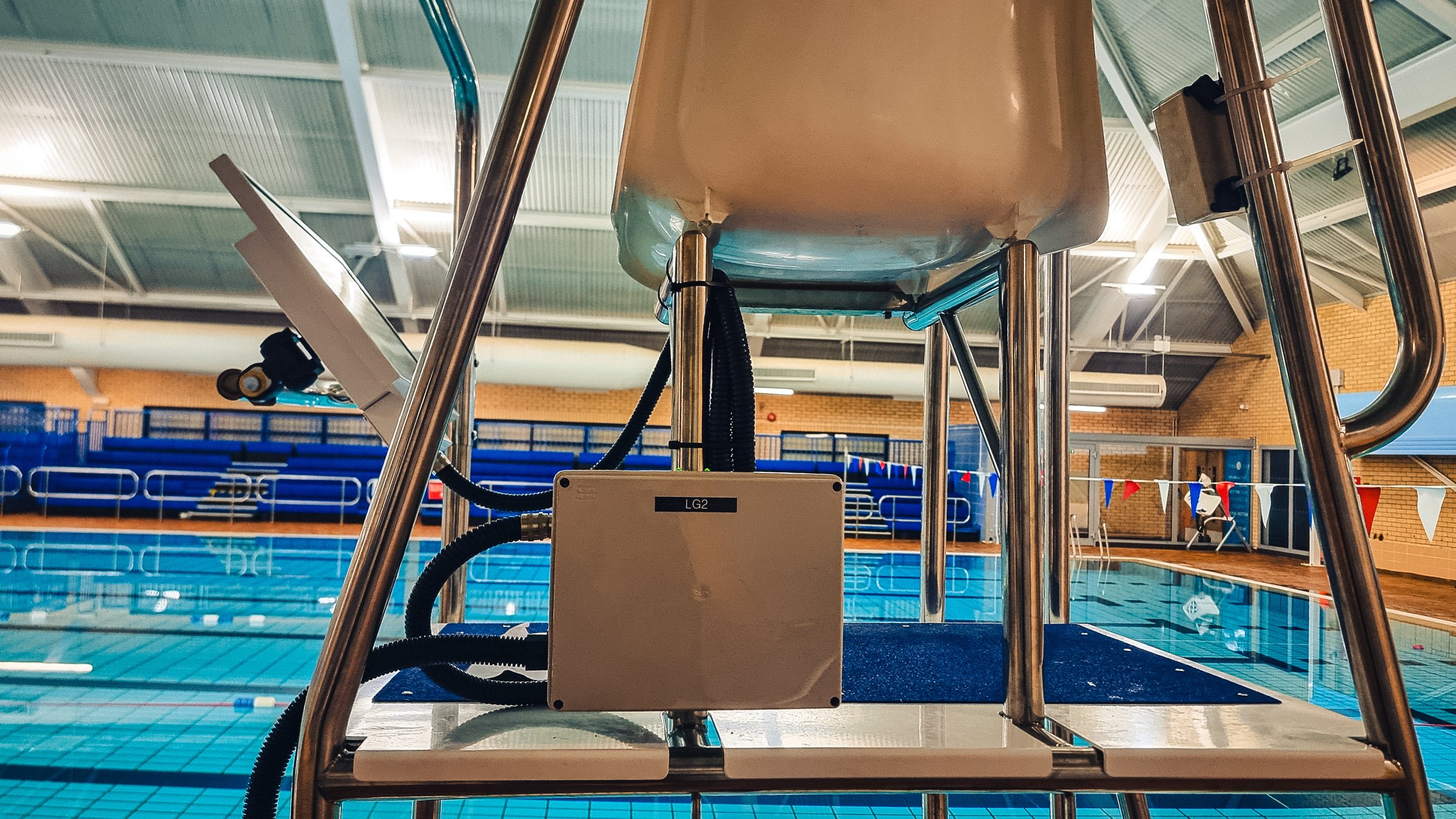‘Blended Lifeguarding’ - The new superpower of swimming pool supervision.
Poolview PLUS
Assisting detection of drowning incidents in swimming pools
Poolview Limited has designed, manufactured and produced a new PROACTIVE and REACTIVE software and hardware system for detecting potential drowning incidents in swimming pools.
The PROACTIVE component:
The concept of proactive lifeguarding is all about early intervention and where possible preventing accidents from developing to a critical stage.
Using our tried and tested Poolview architecture, our new system feeds through to a monitor positioned either next to a Lifeguard on poolside or to an incident management area, such as reception.
Images from the eight strategically located underwater pool cameras are clearly displayed on the monitor, delivering 100% below water visibility. This provides a world first real time view of the what’s happening in a pool, below the surface, something even the best lifeguards struggle to achieve due to variables such as glare, reflection and turbulence. The clarity of these images enables lifeguards or first responders to track swimmers across the whole breadth and depth of the pool in an ordered and timely manner.
Our 8 image Lifeguard Monitor has the worlds first "Real Pool View" where the Lifeguard can track and follow swimmers deep end to shallow end on the top and bottom rows.
In pools which are lifeguarded very little changes in terms of scanning and responding to accidents, as the system is designed to fit in with current working practices.
Lifeguards can systematically scan the images on the monitor as well as the surface of the water, in a desired and continual pattern to ensure the constant supervision of swimmers. Critically, the benefit to this system is the additional essential vision it displays to lifeguards, which helps them form judgements and intervene early in situations which may otherwise not be recognised until it is perhaps too late.
Lifeguards are therefore proactively supervising their zones, and importantly are still very much in control with the ability to make informed decisions about when to intervene and/or conduct a rescue.














The REACTIVE component:
Each system and therefore lifeguard or first responder is further supported by Poolview Plus; the artificial intelligence feature built into the system’s software. Poolview Plus subtly tracks each individual swimmer, continually monitoring their activity until it detects a possible drowning incident developing.
At this point Poolview Plus alerts the lifeguard or first responder to the potential drowning incident. In the first instance this is visually and audibly depicted as a ‘yellow alert’ which without human intervention or change in the swimmer’s behaviour will develop into a ‘red alert’, via the display monitor.
In this instance the lifeguard or first responder has two reactive options:
acknowledge and silence the alarm
acknowledge and escalate the alarm - which implements the facility’s Emergency Action Plan; triggering the rescue of the swimmer.
Should for any reason a lifeguard or first responder miss a ‘red alert’ given off by the system, Poolview Iris™ will enter a fully automatic mode which cannot be silenced without critical intervention such as a rescue being undertaken.
This additional layer of protection is a feature unique to Poolview Iris ™, developed to help provide full proof support to operators, lifeguards and members of the public.
If through risk assessment, it has been deemed reasonably practicable not to provide constant lifeguard supervision Poolview Plus can forward alerts to digital two way radio systems carried by other responders within the facility.
Poolview Iris’s™ architecture and software is the perfect match for lifeguards. Blending lifeguard skills with this technology gives swimming pool supervision a whole new superpower!
In Lifeguarded Pools the automatic mode is seen as a last resort and not as a replacement for human supervision and interaction with the system as described above.
Reliance on fully automatic mode may result in a delay to any required critical intervention.
Technology cannot totally replace human supervision but can be provided as an aid to assist supervision.











